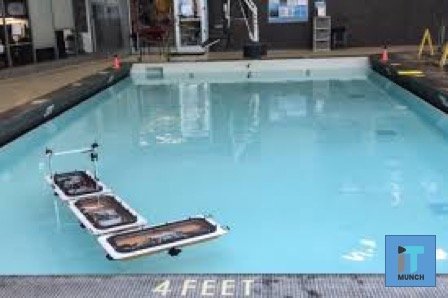MIT’s Self-Directed Boat Robots Shapeshift To Form New Structures
MIT’s work continues developing the fully autonomous robot boats called the “roboats”.
The new trick is allowing them to change configurations and reassemble with one another to form a variety of new structures.
This allows them to carry out primary navigation, and also to bolt on to each other to form basic assemblies.
What Can The Roboat Do?
As of now, they have improved to the point where they can not only connect, but also disconnect and reassemble into new types of structures all by themselves.
The researchers working on the self-assembling roboats created an algorithm that manages all the planning involved in getting groups of the aquatic robots to unbolt from each other.
They also follow a particular path that avoids any potential collisions, and then they reconnect with other robots again in a new type of configuration.
The creators have demonstrated this working both in simulation and in a pool at MIT.
Even with the rectangular platform, robots were configuring themselves into straight lines, squares and even the Ls.
So basically they have mastered the basic shapes from the Tetris game.

How Does Roboats Work?
These units join together to form an overall platform. There are coordinators which include GPS and a measuring tool for stating their relative pose and the velocity.
Additionally, the actuators help the workers in the overall platform unit steer. To create the targeted arrangement, the roboats first identify how each of them is arranged. Then, they issue orders about which one stays in place and which ones have to change its position to achieve that new shape given to them their starting point.
The Aim & The Future
The successful completion of this step played a vital role in the goal of making these roboats truly useful robots. For example, they can assemble and reassemble on-demand to create bridges, floating platforms, barges of any size and much more to save lives in crises.
The self-configuration and re-configuration work because the roboats come in two uses called workers and coordinators.
When these robots were used for these specific experiments, they were about 3 feet by 1.5 feet in size; the full-sized roboats are now about four times that size.
SEE ALSO: Double Launched New Telepresence Robot – Double 3
However, the researchers think the algorithm will work when applied to them, too.
For more updates and the latest tech news, keep reading iTMunch.





